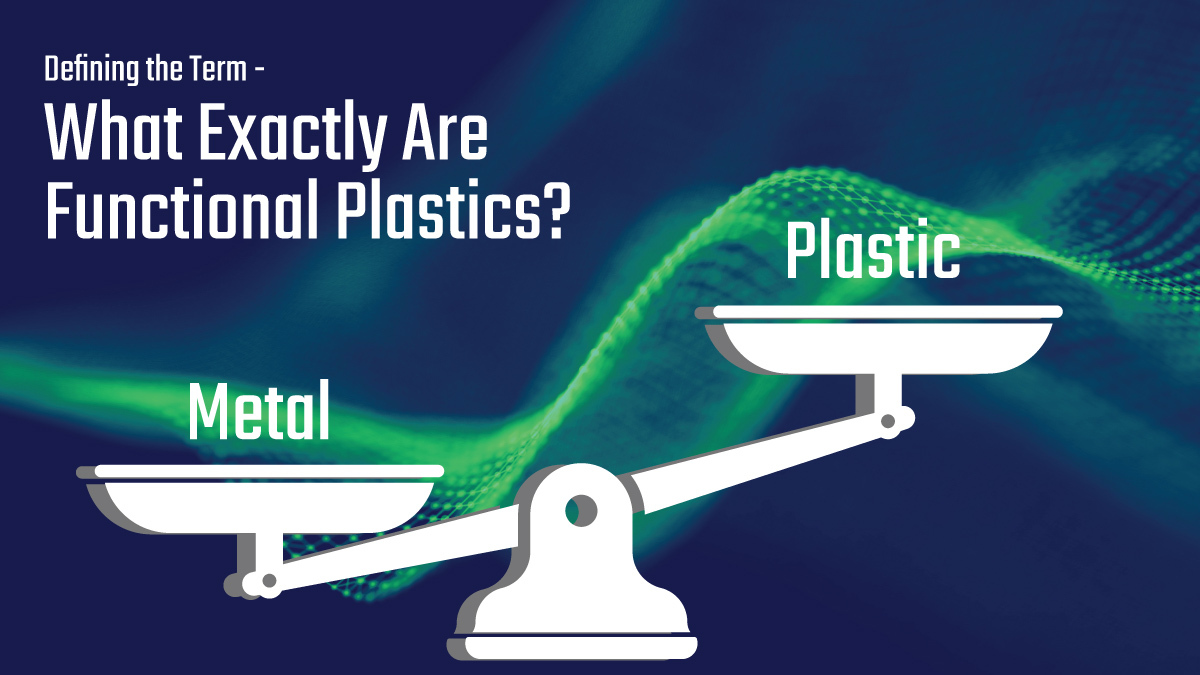
You’ve heard an analogy about square pegs and round holes before. You may have even heard someone explain how they can shove whatever peg through whatever hole, depending on size. This is because some people understand the idea of form and function.
Rigging a solution to a problem is great. Innovation drives industry and for every problem, there should be a dozen solutions. However, not all solutions provide equal results.
Functional plastics looks at the problem with a best-fit mentality. When it comes to manufacturing and parts you don’t want good, you want best. This contributes greatly to the rise in global plastics use.
When it comes to producing goods, you want to know that the parts work and work well. That’s why engineers turn to the functional plastics industry.
Functional Plastics Breakdown
Like many unsung heroes, functional plastics do a lot of work for little recognition. Most commonly used in the automotive and medical industries, these products serve specialized functions.
Understanding the importance of these plastics takes a bit of breaking down both their purpose and their production.
Purpose
Unlike materials used as housing or covers, engineers design functional plastics to remain out of the way. Their primary goal is to perform a task, to do it well, and to do it for a long time without breaking down.
The term functional plastics has two meanings. The first represents such products as wheel housings, internal components, and wire housing.
The second definition concerns specialized polymers in development that respond to external stimuli to produce a beneficial effect.
This guide to functional plastics concerns itself with the first definition, though it will touch on the second towards the end.
Most functional plastics get designed with a specific purpose in mind and then created through injection molding. This process is discussed in depth here.
These products need to fit well, take abuse without breaking, and retain functionality through a wide range of tolerances. Temperature, abrasion, impact, and deformation tolerances in particular.
Form as Function
The biggest reason to choose plastics over metals for creating these products stems from the benefits of plastics.
Metal parts struggle to compete with the versatility and quality demands of manufacturers. The one benefit that metal has, in its strength-to-weight ratio, doesn’t come into play with the need for most components.
The simplicity of design and rapidity with which plastics are created and adapted make them ideal choices for most uses. Couple this with the Considerable research that goes into addressing the quality of parts manufactured.
Lacking a need for frills or other design restrictions, functional plastics allow end product construction to complete cheaply and rapidly.
The ease with which plastics can be created, in varying colors, and with varying polymer types to meet specific needs, makes them ideal.
Benefits
Outside of the strength-to-weight, plastics excel in strength-to-stiffness. This makes them outlast metals in most applications.
This benefit goes hand-in-hand with the malleability and forming processes. Together they allow for faster production cycles by cutting down necessary lead time to create quantities of components.
Functional plastics exist as built to spec components that don’t have to be forged, shaped, and finished to be useful.
Consequences
A consequence of the production speed and ease of use for functional plastics is their reusability. A mistake in the design or ordering process means a total reprocessing to complete needed materials.
Metals, though harder and slower to work with, can be shaped and adjusted after manufacturing to retrofit a design.
Even with this downside, the speed and cost of plastics come out on top on average.
Aesthetics, a Side Effect
Though they are not exactly meant to be seen, functional plastics don’t have to be unsightly. They also can lead to an overall upgrade to aesthetics while still focusing primarily on function.
There are two instances in which this happens.
The first is the choice of colors that goes into a plastic component. Producing a colored part takes no more time than an uncolored. Even multiple colors can be created easily.
This provides an overall aesthetic to an end project which will look as seamless as needed.
The second instance is in organizing and ease of presentation. Color-coding components allow consumers and maintenance people to work quickly with any changes to the end construct.
Consider how colored wire sleeves easily indicate the voltage of the wires in any given electronic. This type of color coding speeds up repairs and replacements, making functional plastics a solid choice even when they reach a life cycle end.
Organization is its own aesthetic. Using functional plastic pieces to clamp and mount gives a tidy appearance. Even if these components are internal, clean means lower chances for snag and abrasions which upgrades longevity.
Future Functional
Soon you will be asking, “What are the functional plastics?” and mean variety over an identifier.
Through structural chemistry, new polymers are being established. These take into account specific stimuli to produce intended results.
Rather than simply expand with heat or shrink with cold, make a gasket that fits securely without buckling in any temperature range.
Chose specific elasticity or rigid crystallization for different possible outcomes. These polymers would react without preparation or support. No need to keep the gaskets wet or the seals oiled, for instance.
This technology isn’t ‘smart’ tech. You choose the form and function before the design phase starts. Reacting to stimuli is a linear function, these materials wouldn’t be subject to change at whim like a morphing science fiction surface.
Still, the new line of ‘functional’ plastics would add another layer of versatility and reliability to an already useful material.
Fit Your Form
Functional plastics get work done. When you have a build that needs durable, easy to produce components, there is simply no equal.
With advancements in production and engineering design, components can be produced and implemented quickly and cheaply.
If you have further questions or need or quote work, contact us.
